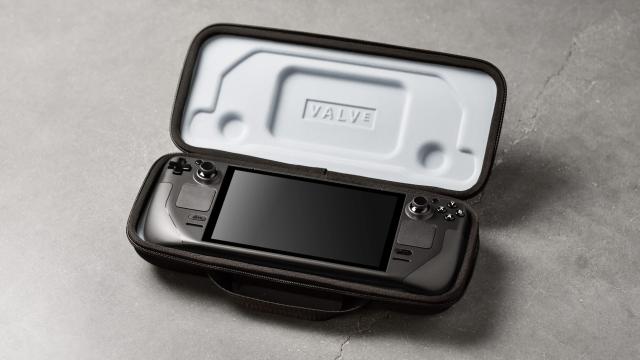Earlier this autumn, rumours started swirling that Valve was working on its own take on the Switch for PC gamers, and today, Valve has returned to turn those rumours into reality with its official announcement for the Steam Deck.
While the Steam Deck shares much of its design with Nintendo’s hybrid handheld console, inside this thing is a PC through and through featuring a custom APU from AMD based on AMD’s Zen 2 and RDNA 2 architectures.
The Steam Deck is slated to start at $US400 ($539) for the base config which comes with 64GB of eMMC storage, while the mid-tier config tacks on a faster 256GB NVMe SSD and some extras like a carrying case and an exclusive Steam Community profile bundle for $US530 ($714), before eventually topping out at $US650 ($875) for a system that features a 512GB NVMe SSD, an anti-glare etched glass screen, an “exclusive carrying case,” and some other digital swag.
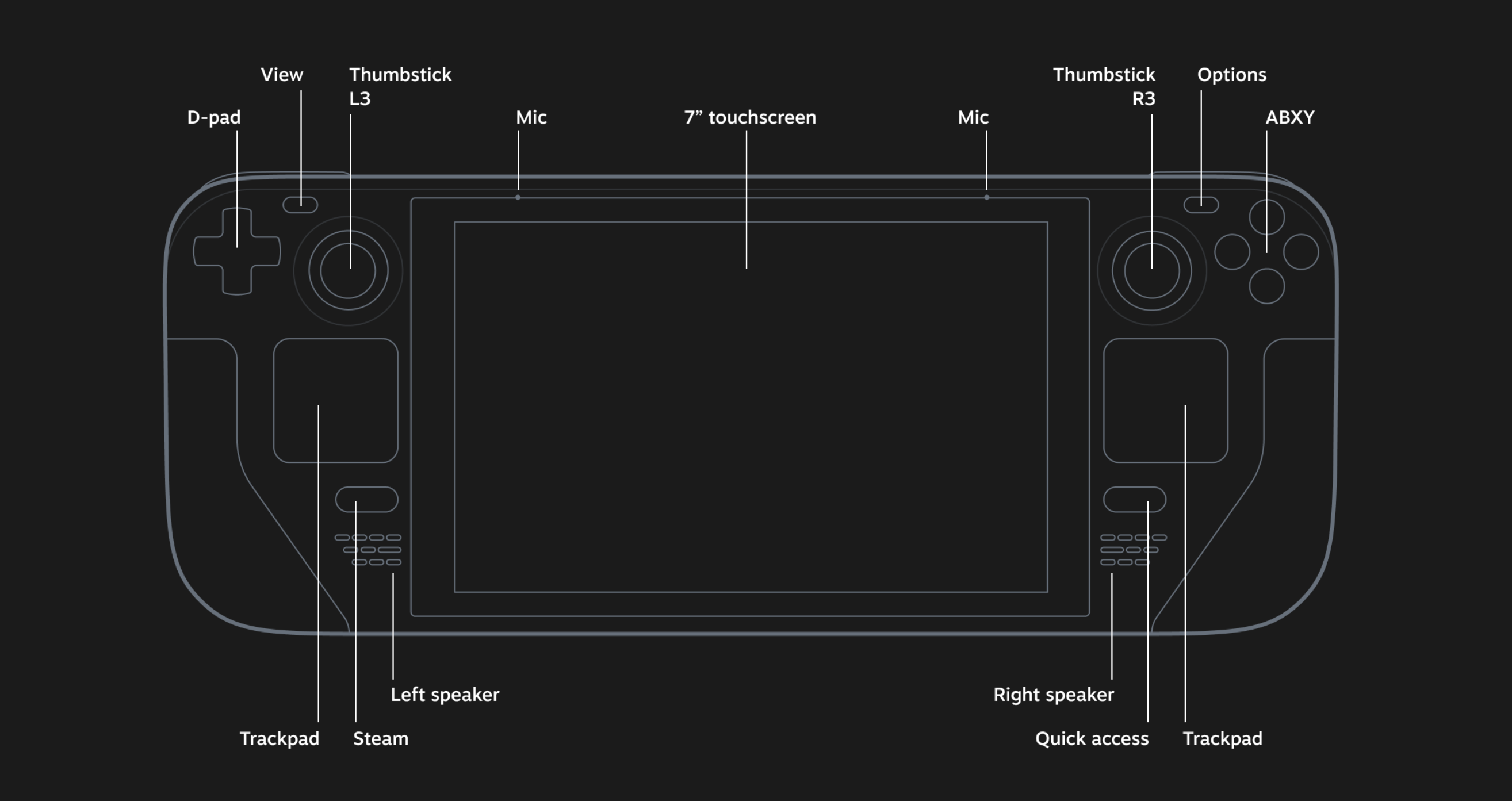
Elsewhere, the rest of the Steam Deck’s specs include a 7-inch 1280 x 800 16:10 LCD display, 16GB of DDR5 RAM, a built-in microSD card slot, 3.5mm audio jack, and a USB 3.0 Type C port for charging, video out, and data transfer. Notably, while the Steam Deck and the Switch share the same basic design, measuring in at 11.7 x 4.6 x 1.9 inches compared to 9.4 x 4 x 1.12 inches for the standard Switch, the Steam Deck is significantly longer and thicker than Nintendo’s portable. Weighing in at around a pound and a half, the Steam Deck isn’t nearly as light as a Nintendo Switch (0 kg) either.
Another important difference is that while the Steam Deck features a bunch of built-in controls like dual analogue sticks, two touchpads, and an assortment of triggers and buttons, those controls aren’t detachable in any way.
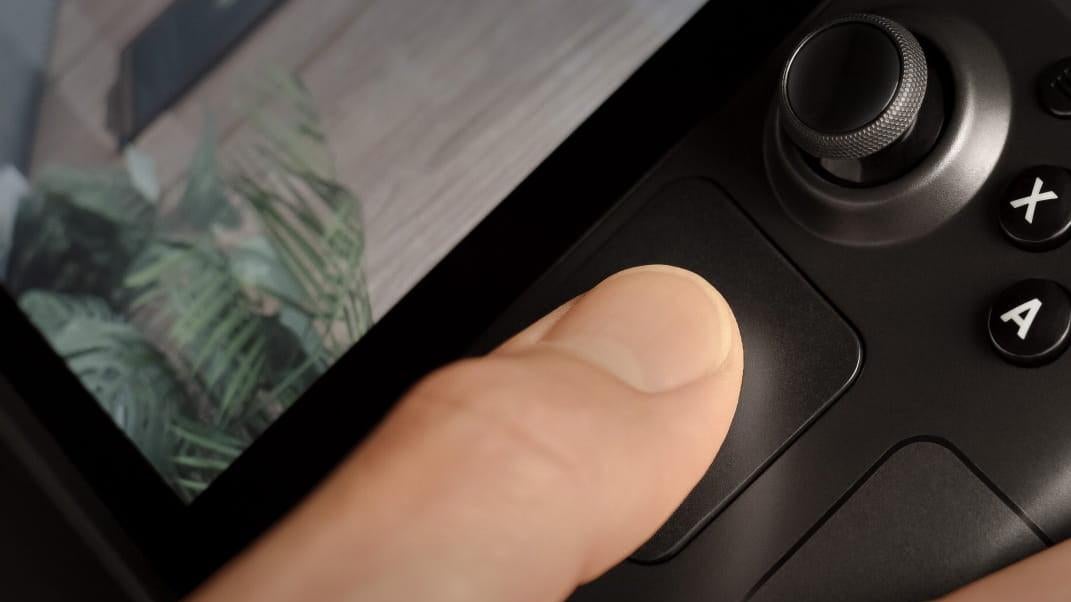
However, what the Steam Deck lacks in portability, it should make up for in performance, as Valve claims the Steam Deck should have full access to your entire library of Steam games, though obviously, you might have to tweak your settings if you want to play something like Cyberpunk 2077. That said, because the Steam Deck is expected to function like any other gaming PC, you can also sidestep the Steam Deck’s performance limits by streaming games from your laptop or desktop over wifi or even 4G/5G to the Steam Deck. It’s also important to note that the Steam Deck will run an updated version of Valve’s Linux-based SteamOS instead of Windows, with Proton to support compatibility so game devs don’t need to create custom ports for the Steam Deck.
Just like the Switch, Valve is making a dock for the Steam Deck so you can connect it to your TV or monitor, though it won’t come bundled for free and instead will be available as an optional accessory. But for those who don’t want to shell out for a special dock, Valve also says the Steam Deck should be compatible with standard USB-C docks, so you’re not locked into Valve’s accessory.
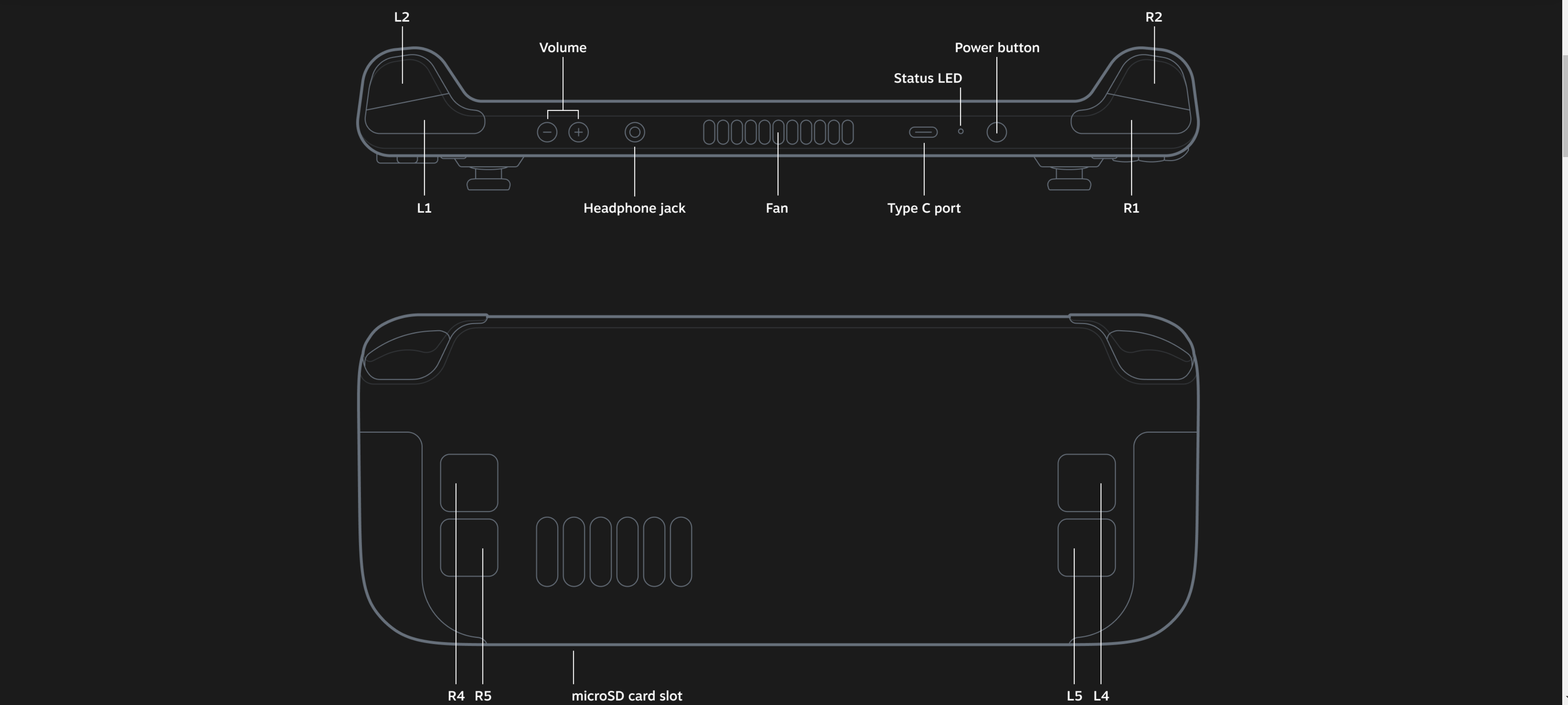
Also, because we’re in the midst of a global chip crunch, Valve is introducing a new reservation system that it says is designed to “ensure an orderly and fair ordering process.” So initially, customers will be asked to pay a small reservation $US5 ($7) fee (that will go towards the final cost of the Steam Deck), after which Valve will alert customers when systems are available for delivery, which is when customers will need to shell out for the full price of the system.
Reservations are scheduled to open tomorrow, June 18, at 3 a.m. AEST. To protect against unauthorised resellers (aka scalpers), Valve says that anyone who has not purchased something on Steam prior to June 2021 will have to wait an extra 48 hours to make a reservation.
Now that we’ve got the basics out of the way, as someone who loves all sorts of gaming handhelds (I’ve owned every almost every Gameboy, multiple DSes, a Game Gear, PSP, Vita, and even the Sega Nomad), I’ve got some thoughts on this thing.
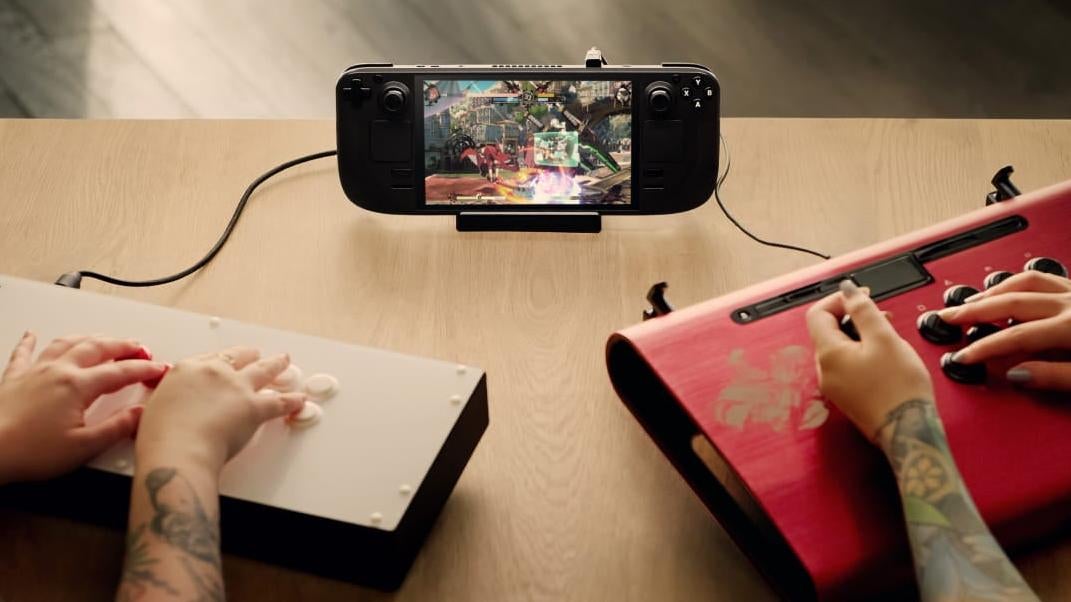
The first is that it’s slightly disappointing to see Valve opt for a 1280 x 800 display, which is basically the same as the 720p resolution Nintendo uses on the Switch (and the OLED Switch). I was hoping that by using more powerful guts, Valve could support 1080p in handheld mode, but it seems that just wasn’t meant to be. However, Valve does say the Steam Deck is capable of outputting video at up to 4K/120Hz when connected to an external display.
Also, after looking at the various configs, I would personally stay away from the base model and its 64GB of eMMC storage. That’s the type of storage that typically gets used on budget tablets and laptops to cut costs, and while it might be fine for playing casual games, for people used to the kind of performance gaming PCs deliver, I feel like paying $US130 ($175) to upgrade to a 256GB NVMe SSD makes a lot more sense.

And while the inclusion of dual touchpads might seem awkward, I think it’s a necessity for making traditional mouse-and-keyboard-based PC games playable on a handheld. Steam’s configurable controller options have come a long way in the time since Valve released the Steam Controller, and while it might be somewhat awkward at first, those touchpads might end up being some of the most important components on the Steam Deck.
Finally, while the Steam Deck was designed primarily to play games, I’ll be interested to see how it handles traditional productivity tasks, because, for those willing to hook up their own USB-C dock, the Steam Deck could make for an interesting alternative to a traditional laptop for frequent travellers.
Still, after a number of big tech companies like Dell and Lenovo have teased concept devices designed to PC-based alternatives to the Nintendo Switch, it’s nice to see that at least one might actually go on sale for real.
Editor’s Note: Stay tuned for news on local Australian pricing and availability.
